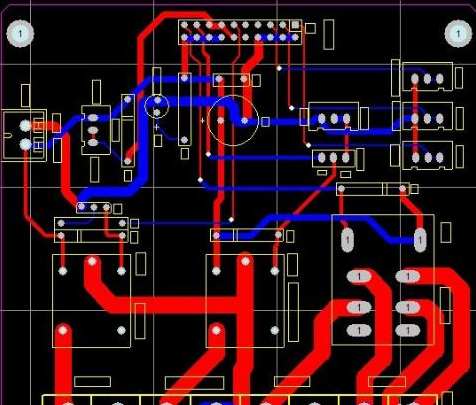The following is a detailed introduction to the characteristics and disadvantages of lead spray tin and lead-free tin spray in glass fiber PCB.
The first thing to install a capacitor is the installation distance. Capacitors with lower capacity have a higher resonance frequency and a smaller decoupling radius, so they are located near the chip. Things that are slightly larger can be placed a little further away from the outer layer. But all capacitors that decouple the chip try to get close to the chip. Evenly distributed at every value level around the chip. Generally, when designing a chip, it is considered that the power supply and pin placement positions are usually evenly distributed on the four sides of the chip. Therefore, voltage disturbances must be decoupled uniformly around the chip. If the 680pf capacitor on the upper part of the chip is placed on the upper part of the chip due to the decoupling radius problem, the voltage disturbance at the lower part of the chip cannot be well decoupled. When installing a capacitor, the capacitor should be pulled out of the pad with a small piece of wire, and then connected to the power plane through the hole.
The traditional method of cleaning and printed circuit boards is to clean them with solvents. The mixed solvent composed of CFC-113 and a small amount of alcohol (or isopropanol) has a good cleaning effect on the residue of turpentine solder. However, because CFC-113 has a destructive effect on the air atmosphere, it has been strictly forbidden to use it at this stage.

At this stage, non-ODS cleaning processing technology can be used, including water-based cleaning, semi-aqueous cleaning, organic solvent cleaning, and no cleaning processing. The decision should be made based on the requirements of the electronic equipment and the necessity of the cleaning quality and the specific conditions of the processing plant. Water-based cleaning 1.1 Water-based cleaning processing technology Water-based cleaning processing technology is water-based cleaning materials. In order to improve the effectiveness of cleaning, a small amount of surfactants, cleaning modifiers, desulfurizers and other compounds can be added to the water (generally 2%≤10%). The details of environmental pollution with different characteristics on printed circuit boards can be used as preservatives in water-based cleaning agents to make their cleaning applications more extensive. Water-based cleaners are used for water-soluble stains.
The common board in metal PCB is composed of aluminum core containing standard FR-4. Simply put, it is composed of a three-layer metal core. Since the aluminum-based PCB board contains a heat rejection layer, the operating temperature of the components can be reasonably reduced, and the life cycle of the goods can be improved. Compared with the traditional FR-4 board, the aluminum-based PCB circuit board has better thermal conductivity. The metal material layer of the aluminum-based PCB board can quickly discharge the heat of the components, thereby reducing the heat transfer coefficient, and has a good thermal conductivity.
The PCB board has a high density. In the past few decades, the high density of PCB boards can be trended with the increase in the processing speed of integrated circuit chips and the development of mounting technology. It is very reliable. Through a series of inspection, testing and aging tests, the long-term service life of PCB can be guaranteed to be 20 years, and it can be carried out in reliable work. Can design solutions. The various characteristics of PCB, such as the physical, organic, chemical and mechanical equipment of electrical equipment, can be designed according to the standardization and standardization of the design plan. The time is short and the efficiency is high.
Lead-free tin spraying is an environmental protection process. It does little harm to humans. The current process of advocating is that the lead content in lead-free tin does not exceed 0.5. Lead-free tin will dissolve higher. Then the solder joints are stronger. Basically, lead spray and lead-free spray are a process. The purity of lead is different. Lead-free tin protects the natural environment more safely, which is the trend of future development. This article introduces in detail the characteristics and disadvantages of lead spray tin and lead-free tin spray. However, insecurity and environmental protection are harmful to people, so it is recommended to use lead-free tin spraying and non-toxic and harmless. This is also the metal surface treatment technology that is promoted at this stage.